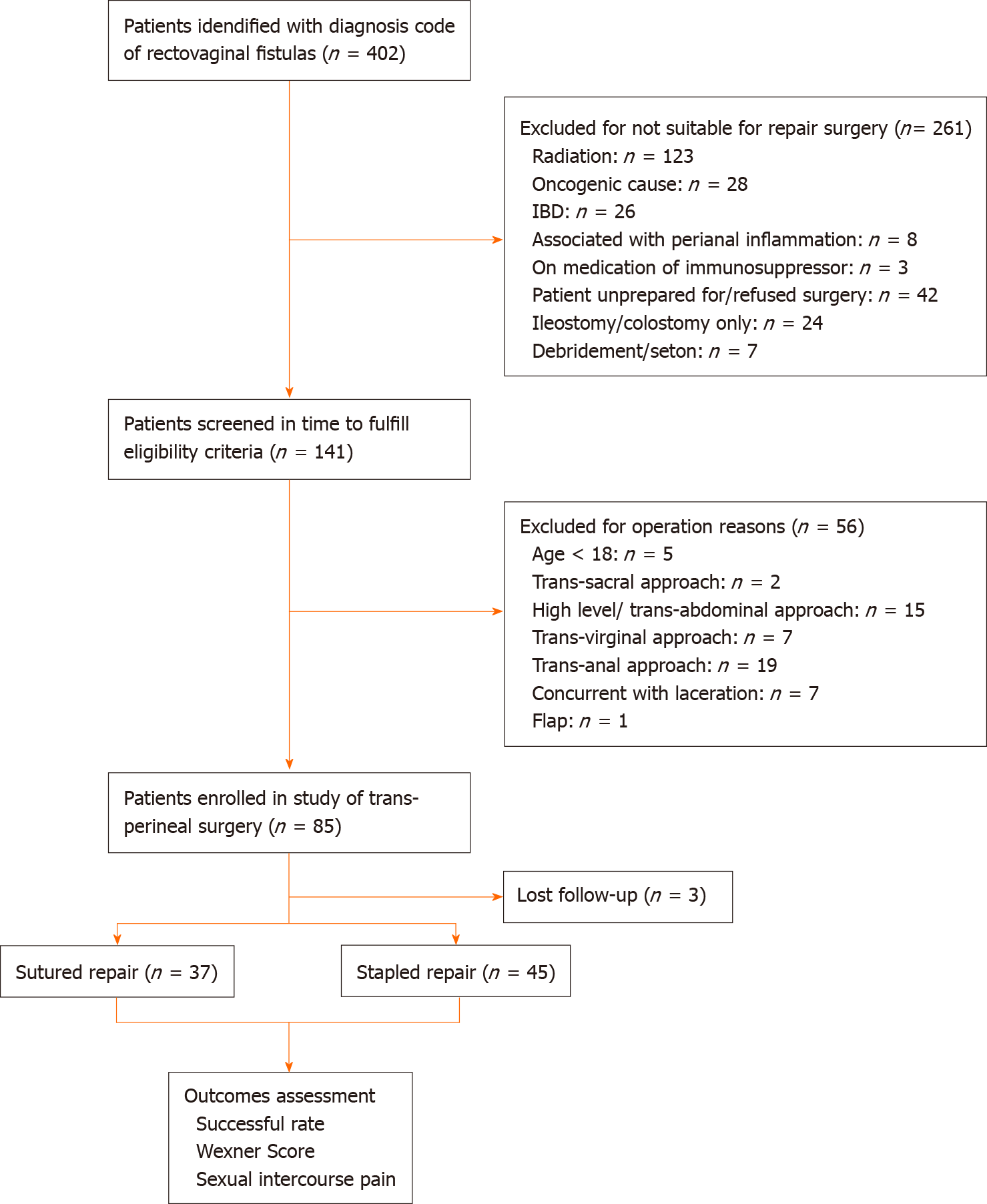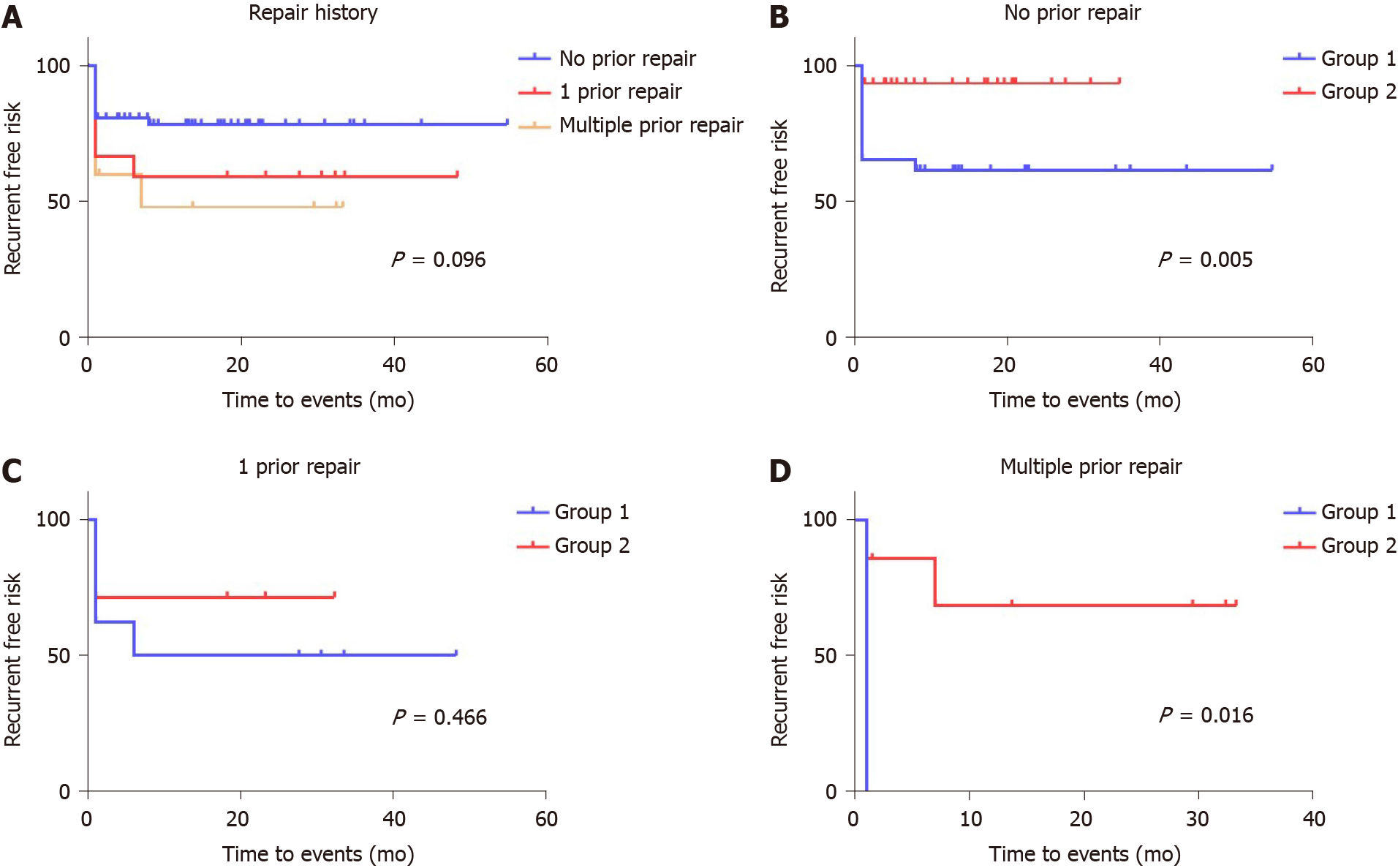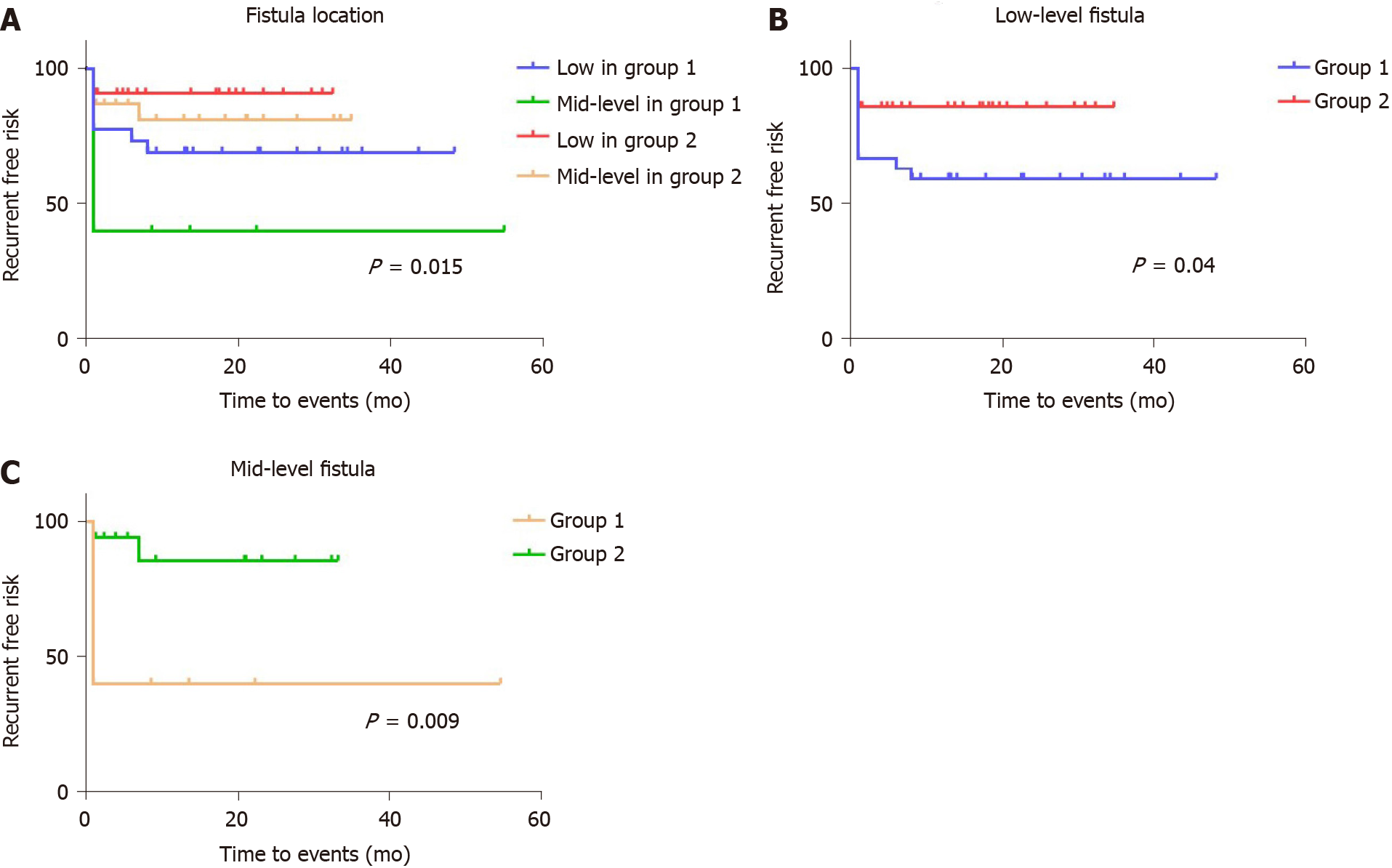Copyright
©The Author(s) 2021.
World J Gastroenterol. Apr 14, 2021; 27(14): 1451-1464
Published online Apr 14, 2021. doi: 10.3748/wjg.v27.i14.1451
Published online Apr 14, 2021. doi: 10.3748/wjg.v27.i14.1451
Figure 1 Participant enrolment and follow-up.
A total number of 402 rectovaginal fistula patients were treated at The Sixth Affiliated Hospital of Sun Yat-sen University between May 2015 and May 2020. Among them, 85 were treated by stapled or sutured transperineal repair in our hospital. Apart from three patients who were lost to follow-up, 82 patients were included in this study. The clinical data for each were collected and analysed retrospectively. A total of 37 patients underwent conventional direct sutured transperineal repair and were classified as Group 1, and 45 patients who underwent stapled repairs were included in Group 2. Basic characteristics, perioperative details, and surgical outcomes were evaluated. IBD: Inflammatory bowel disease.
Figure 2 Kaplan-Meier analysis for the risk of rectovaginal fistula recurrence — effect of surgical type and preoperative Wexner score.
A: Sutured vs stapled repair; B: Preoperative Wexner score categorized as < 10 or ≥ 10.
Figure 3 Kaplan-Meier curves assessing recurrence-free risk combining the mode of surgery (sutured vs stapled repair) with the preoperative Wexner score.
A: Preoperative Wexner score categorized as < 10 or ≥ 10 in each group; B: Patients with preoperative Wexner score < 10 in each group; C: Patients with preoperative Wexner score ≥ 10 in each group.
Figure 4 Kaplan-Meier curves of risk of recurrence and the effect of prior rectovaginal fistula repair history, according to the mode of surgery (sutured vs stapled repair).
A: Transperineal repair categorized as no prior repair, single, and multiple prior repair(s) in each group; B: Patients who had no prior repair history in each group; C: Patients with a single prior repair in each group; D: Patients who had more than one prior repair in each group.
Figure 5 Kaplan-Meier curves of risk of recurrence and the effect of height of the fistula, according to the mode of surgery (sutured vs stapled repair).
A: Fistula location categorized as low- and mid-level in each group; B: Patients with low-level fistula in each group; C: Patients with mid-level fistula in each group.
- Citation: Zhou Q, Liu ZM, Chen HX, Ren DL, Lin HC. Stapled transperineal repair for low- and mid-level rectovaginal fistulas: A 5-year experience and comparison with sutured repair. World J Gastroenterol 2021; 27(14): 1451-1464
- URL: https://www.wjgnet.com/1007-9327/full/v27/i14/1451.htm
- DOI: https://dx.doi.org/10.3748/wjg.v27.i14.1451













